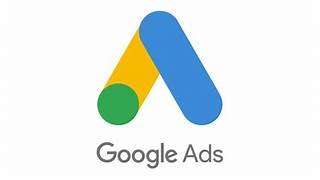ABOUT GOOGLE ADS
Introduction
In today’s competitive digital landscape, businesses need effective strategies to attract potential customers. Google Ads is one of the most powerful Pay-Per-Click (PPC) advertising platforms, allowing businesses to appear at the top of Google’s search results and display ads across various online channels.
With Google Ads, businesses can target specific audiences, control ad spend, and measure campaign performance in real-time. This guide will walk you through everything you need to know about Google Ads, from setting up campaigns to optimizing them for maximum return on investment (ROI).
What is Google Ads?
Google Ads (formerly known as Google AdWords) is an online advertising platform developed by Google. It allows advertisers to bid on keywords so their clickable ads appear in Google’s search results, YouTube videos, partner websites, and mobile apps.
When a user searches for a keyword related to an advertiser’s business, Google runs an ad auction to determine which ads will be displayed based on factors like bid amount, ad relevance, and expected click-through rate (CTR).
Why Use Google Ads?
Google Ads is a highly effective advertising platform for businesses of all sizes. Here’s why:
- Massive Reach – Google processes over 8.5 billion searches per day, giving advertisers access to a vast audience.
- Targeted Advertising – Businesses can target users based on demographics, location, interests, and search behavior.
- Cost Control – Advertisers only pay when users click on their ads, making it a cost-effective marketing strategy.
- Measurable Results – Google Ads provides real-time data on ad performance, allowing for data-driven decision-making.
- Fast Results – Unlike SEO, which takes time, Google Ads can drive traffic almost instantly.
How to create google ads account
Click to contact best google ads service agency
Types of Google Ads Campaigns
Google Ads offers multiple campaign types to suit different marketing objectives.
1. Search Ads
- Appear at the top of Google’s Search Engine Results Pages (SERPs)
- Text-based ads triggered by specific keywords
- Ideal for businesses looking to generate leads and conversions
Example: A law firm bidding on “best divorce lawyer in New York” to appear at the top of Google search results.
2. Display Ads
- Visual banner ads shown on websites, YouTube, and Google’s Display Network
- Ideal for increasing brand awareness and retargeting visitors
Example: A clothing brand displaying image ads on fashion blogs to attract potential customers.
3. Shopping Ads
- Show product images, prices, and store information
- Appear at the top of Google Shopping results
- Best for eCommerce stores
Example: A shoe store promoting sneakers with pricing and customer reviews.
4. Video Ads (YouTube Ads)
- Ads that appear before, during, or after YouTube videos
- Used for brand awareness and engagement marketing
Example: A fitness brand running a 30-second YouTube ad before workout videos.
5. App Promotion Ads
- Designed to increase app installs from Google Play or the App Store
- Shown on Google Search, Play Store, YouTube, and partner sites
Example: A gaming app promoting new downloads via in-app ads.
6. Local Services Ads
- Help local businesses (e.g., plumbers, electricians) get leads directly from Google
- Pay only for leads (calls/messages) rather than clicks
Example: A roofing company using local ads to generate phone call leads.
How Google Ads Works
It operates on an auction system, where advertisers bid on keywords. The ad rank is determined by:
- Bid Amount – How much an advertiser is willing to pay per click.
- Quality Score – Google’s rating of ad relevance, expected CTR, and landing page experience.
- Ad Extensions & Relevance – Additional information (like phone numbers, site links) boosts ad visibility.
Even if an advertiser bids lower than a competitor, a higher Quality Score can result in better ad placement at a lower cost.
Setting Up a Google Ads Campaign
Step 1: Define Your Goals
Before launching a campaign, determine what you want to achieve:
- Increase website traffic
- Generate more leads and sales
- Boost brand awareness
- Promote a new product
Step 2: Choose Your Campaign Type
Select the best campaign type based on your goals (Search, Display, Shopping, Video, or App Ads).
Step 3: Perform Keyword Research
- Use Google Keyword Planner to find high-intent keywords.
- Focus on long-tail keywords to target specific user searches.
- Add negative keywords to avoid irrelevant clicks.
Example: A travel agency may add “free travel” as a negative keyword to filter out users looking for free vacations.
Step 4: Create Ad Groups
Each campaign consists of ad groups targeting specific keywords.
Example:
- Campaign: Digital Marketing Services
- Ad Group 1: SEO Services (keywords: “best SEO agency,” “SEO expert”)
- Ad Group 2: PPC Services (keywords: “PPC consultant,” “Google Ads expert”)
Step 5: Write Compelling Ad Copy
Crafting engaging ad copy is crucial for attracting clicks and conversions. Start with a catchy and relevant headline, such as “Increase Sales with Google Ads – Free Consultation.” Next, ensure the description clearly communicates your value proposition in a concise and persuasive manner. Finally, include a strong call-to-action (CTA) that encourages users to take action, like “Get a Free Quote” or “Start Your Free Trial Today.”
Step 6: Set Your Budget & Bidding Strategy
To maximize ad performance, setting the right budget and bidding strategy is essential. Determine your daily budget based on how much you’re willing to spend per day. When selecting a bidding strategy, consider the following options:
- Manual CPC – Allows complete control over individual keyword bids.
- Maximize Clicks – Lets Google optimize bids to drive the highest number of clicks.
- Target CPA (Cost Per Acquisition) – Adjusts bids automatically to achieve conversions at a specified cost.
Step 7: Design a High-Converting Landing Page
A well-optimized landing page enhances user experience and improves conversion rates. Focus on fast loading speed and ensure the page is fully mobile-friendly. Use a clear and compelling CTA such as “Sign Up Now” or “Book a Free Consultation” to guide users toward the desired action. Additionally, keep the landing page content consistent with the ad message to maintain relevance and engagement.
Step 8: Launch and Monitor Performance
Once the campaign goes live, ongoing monitoring is essential for success. Utilize Google Ads Analytics to track key performance metrics such as click-through rate (CTR), cost-per-click (CPC), and conversions. Regularly review campaign data to identify areas for improvement. A/B test different ad variations, adjust keyword bids, and refine audience targeting to enhance results over time.
Optimizing Google Ads for Better ROI
- Improve Quality Score – Use relevant keywords, high-quality ads, and optimized landing pages.
- Use Ad Extensions – Add site links, call buttons, and structured snippets.
- Implement A/B Testing – Experiment with different headlines, descriptions, and CTAs.
- Refine Targeting – Adjust audience demographics, device targeting, and locations.
- Leverage Remarketing – Retarget visitors who didn’t convert the first time.
Common Google Ads Mistakes to Avoid
- Ignoring Negative Keywords – Leads to wasted ad spend on irrelevant searches.
- Poorly Optimized Landing Pages – Low conversion rates due to slow pages or lack of clarity.
- Setting and Forgetting – Campaigns need constant optimization.
- Bidding Too High on Broad Keywords – Results in higher costs without quality conversions.
- Not Using Conversion Tracking – Fails to measure true ROI.
Future of Google Ads
- AI & Automation – Google’s AI-driven Smart Bidding will enhance campaign optimization.
- Voice Search Optimization – PPC strategies will adapt to voice search queries.
- Privacy-First Advertising – Google is shifting toward cookie-less tracking.
- Interactive & Visual Search Ads – More focus on image-based and video ads.
Conclusion
Google Ads is an essential tool for businesses looking to drive targeted traffic and increase sales. By understanding the platform’s features, setting up strategic campaigns, and continuously optimizing performance, businesses can achieve maximum ROI.
Whether you’re a small business or a global brand, mastering it can give you a competitive edge in the digital marketing landscape.

